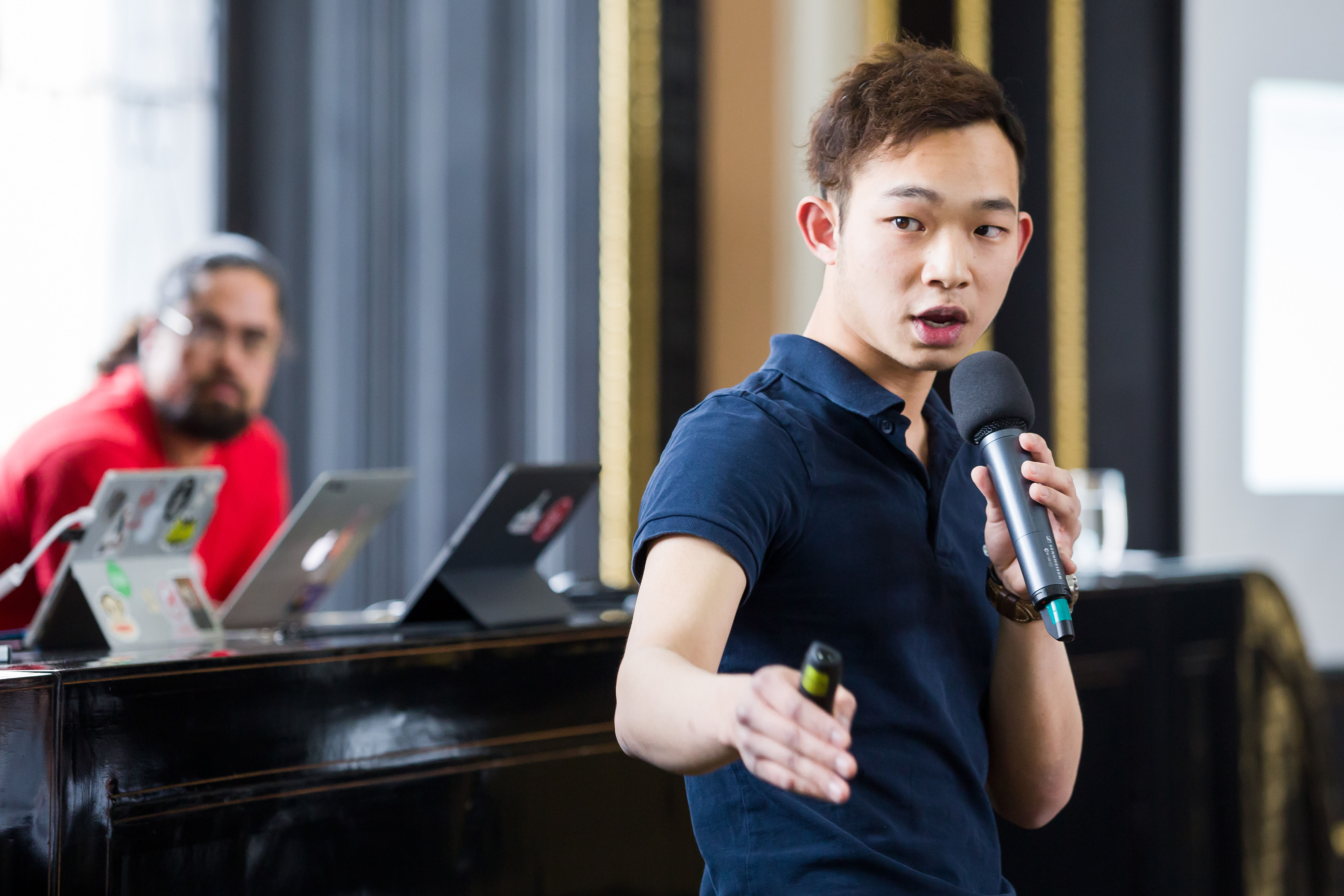ŠKODA AUTO DigiLab in Holešovice, Prague, has been teeming with people since the early hours. They have come from all over the world, including Israel, the US, Russia, Singapore and China. Some already have a clear idea of what awaits them here and they know what their three-member team will be doing. Others have turned up alone and have yet to join a team. The Germans Nikolas and Laurenz, for example, came to the hackathon as a pair, so they are looking for a third member for their gang. Other teams are hastily trying to find the right “challenge” – the topic they will be dealing with. By 2 p.m. on Friday, all the topics should be distributed, but many teams are still fumbling. However, help is at hand from experienced mentors, employees of companies such as ŠKODA AUTO, ŠKODA AUTO DigiLab, Innogy and Pražská energetika.
“I’ve missed this tonnes,” says Iryna Kasumava from ŠKODA AUTO DigiLab as she enjoys the atmosphere. Having previously participated in several hackathons, she is now a mentor. She finds it so interesting to pass on her experience to young programmers that she has given up a free weekend to join in with the hackathon.

Once the challenges have been handed out, the teams sit at their computers. First, they think about how to approach the solution, and then launch themselves directly into the programming work. This is the start of a marathon of non-stop programming, testing and tweaks. The essence of hacking is to experiment – some ideas have the potential to be developed by the team, while others need to be abandoned quickly so they don’t get in the way of a smoothly-functioning program. This is why a tool-kit has been placed at the teams’ disposal, including a 3D printer and an Arduino hardware set, so that they can rapidly build a functional prototype in situ.
Our Germans, Nikolas and Laurenz, are tasked with developing rear-view mirrors that automatically adjust to provide drivers with a proper view of what is happening behind the car. The idea is that drivers don’t have to go through the rigmarole of changing everything every time they get in a car. Using a 3D printer and other equipment, in a few dozen minutes the team is able to make a functioning model that they can then test in their own car. They burn one set of fuses, but the model works!
The Maasters Chinese-Czech team focused on devising a complex algorithm for calculating the value of a used car after several years’ operation, and on whether it is more cost-effective to keep driving that car, to lease a new car, or to opt for a carsharing service. They were able to program this predictive model with a set of real-world used-car data provided by a large car dealer as one of the event partners.

Two secondary school teams also participated in the Hackathon.























